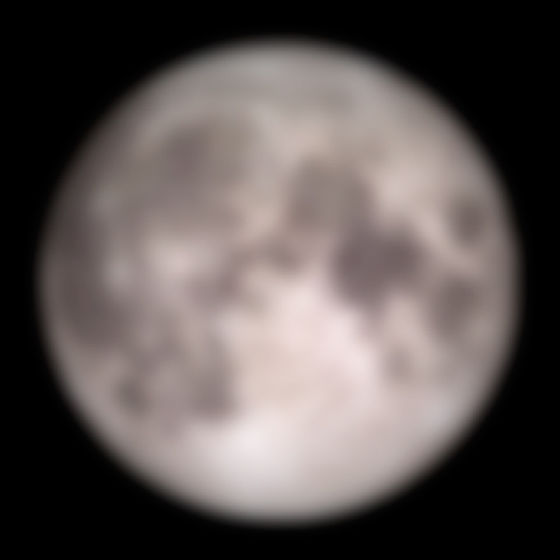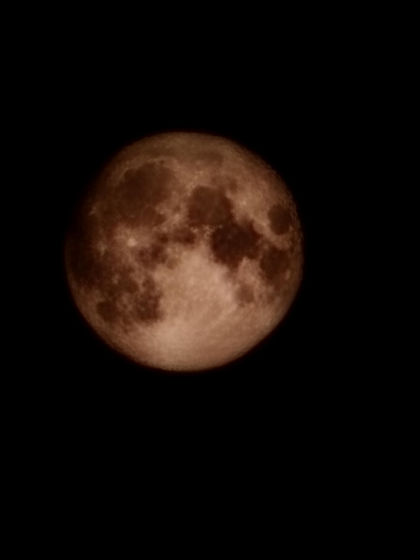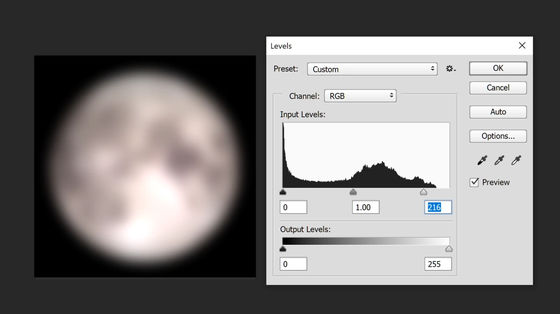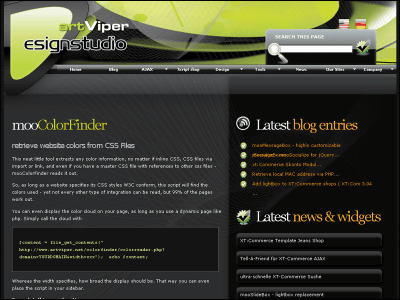Pointed out that the picture of the moon taken with Galaxy's camera's 100x zoom function 'Space Zoom' is 'counterfeiting by AI'

Samsung's high-end smartphones, including Samsung's '
Samsung 'space zoom' moon shots are fake, and here is the proof : Android
https://www.reddit.com/r/Android/comments/11nzrb0/samsung_space_zoom_moon_shots_are_fake_and_here/
It looks like Samsung is cheating on 'space zoom' moon photos | AppleInsider
https://appleinsider.com/articles/23/03/11/samsungs-smartphone-space-zoom-may-lean-heavily-on-ai-for-moon-shots
Reddit user ibreakphotos seems to have long had doubts about the credibility of the 'space zoom' function, which realizes up to 100x zoom by adding Samsung's AI processing. So, when I verified the photos that could actually be taken using the space zoom, I explained, ``I found that the photos taken with the space zoom were not completely fakes, but they were not even real.'' I'm here.
Even MKBHD, a popular American tech YouTuber, claims that the photo allegedly taken with Space Zoom in his YouTube short was not faked . However, 'This is not correct,' ibreakphotos said. However, he also said, 'No one has been able to prove that the photos taken with Samsung's Space Zoom were forged.'
The verification work done by ibreakphotos is as follows. First, download a high-resolution image of the moon from the Internet.

Next, scale down the high resolution image of the moon to 170x170 pixels and blur it all with a Gaussian blur. This made the details of the moon undistinguishable.

Below is a 170 x 170 pixel blur-processed moon photo magnified 4 times to show how much the details of the moon have been crushed by blurring.

A 170x170 pixel blurred photo of the moon displayed full screen on a monitor, all room lights turned off, and the moon blurred by 100x zoom using the Galaxy's space zoom feature as far away from the monitor as possible. Take a picture of. You can check the state of shooting by right clicking on the image below and clicking 'Play'.
The pictures taken then are as follows.

Although the details of the moon picture (left) displayed on the monitor were completely crushed due to blurring, you can see that the details of the moon picture (right) taken are quite fine.

ibreakphotos points out that there is a clear difference between super-resolution processing, which combines multiple frames to finely express the details of a photo, and detail restoration processing by a specific AI model trained on various lunar photos. . As ibreakphotos' experiment shows, Samsung's SpaceZoom is more accurate than an AI model trained on lunar photos, despite the lack of detail to recover. Evidence that it is being used.
Therefore, ibreakphotos said about Samsung's space
However, Samsung responded to suspicions that the space zoom photo of the moon was too detailed, saying, ``No image overlays or texture effects were applied when taking the photo.The scene optimizer confuses object detection. If you do, it will lead to mistakes such as running the same texture pattern on similar objects.' However, ibreakphotos points out that 'such processing is actually being done.' .
If you turn off the scene optimizer from Galaxy's camera settings, it seems that the details of the moon will not be processed finely even if you shoot with space zoom.

Related Posts:
in Mobile, Posted by logu_ii





